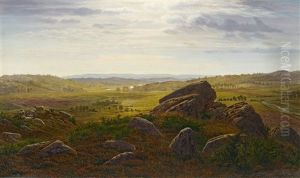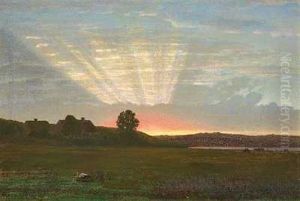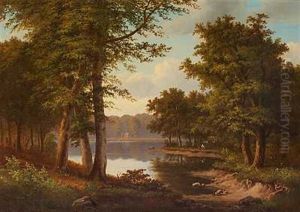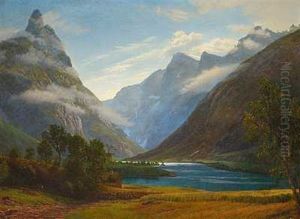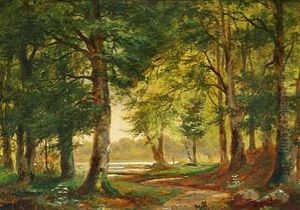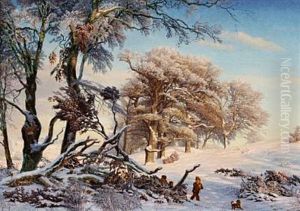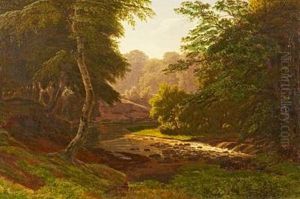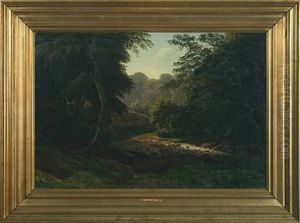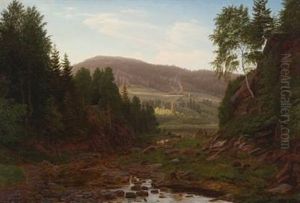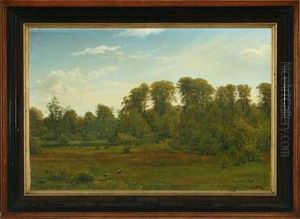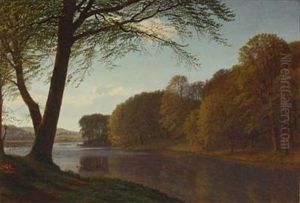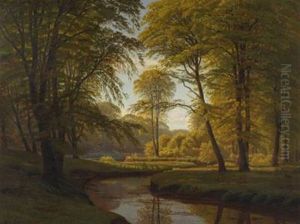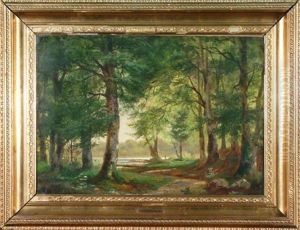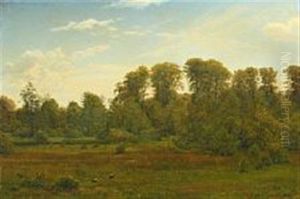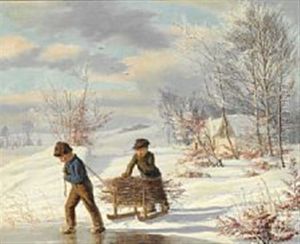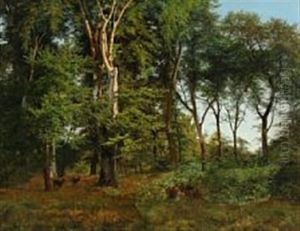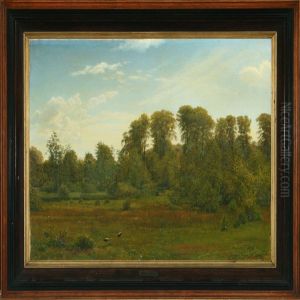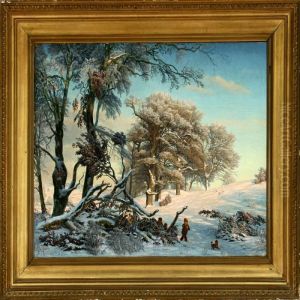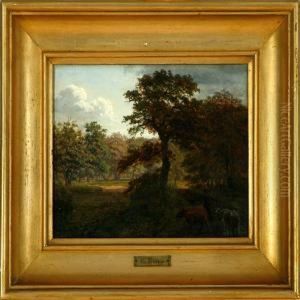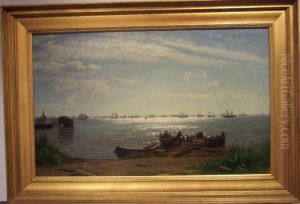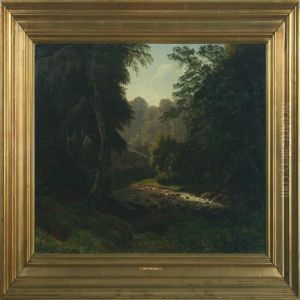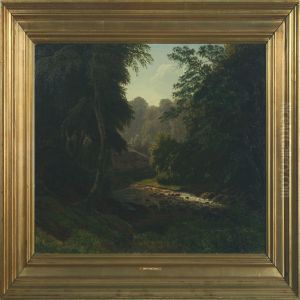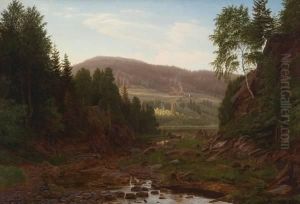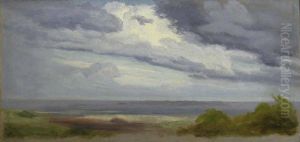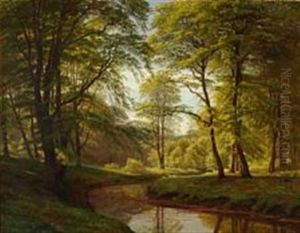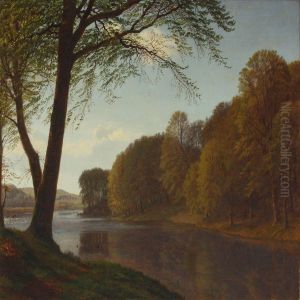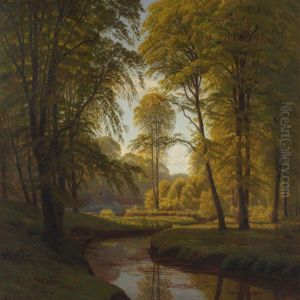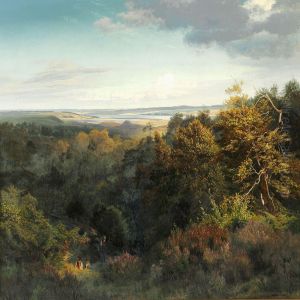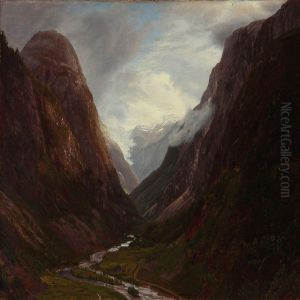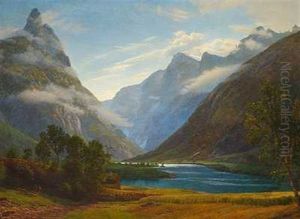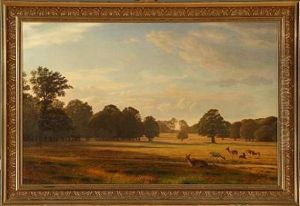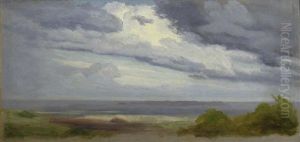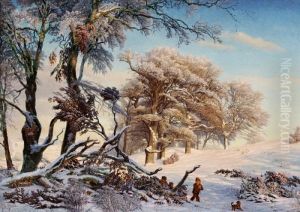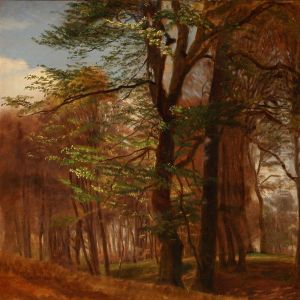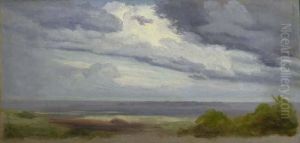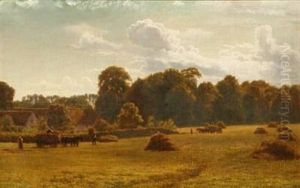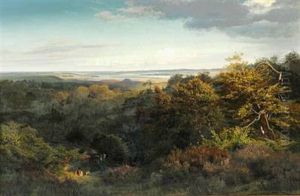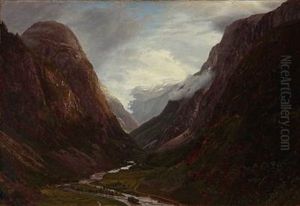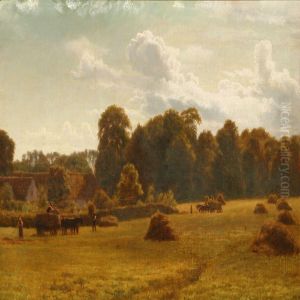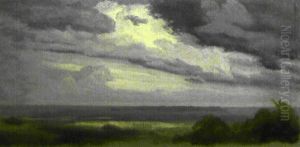Gotfred Rump Paintings
Gotfred Rump was a Danish painter born on March 2, 1816, in Copenhagen, Denmark. He was known for his contributions to the Golden Age of Danish Painting, a period characterized by a high level of artistic creativity and innovation in Denmark during the first half of the 19th century. Rump's work primarily focused on landscape and portrait painting, capturing the essence of Danish life and scenery with a remarkable attention to detail and a profound sense of realism.
Educated at the Royal Danish Academy of Fine Arts, Rump was deeply influenced by the teachings of Christoffer Wilhelm Eckersberg, often referred to as the father of Danish painting. Eckersberg's emphasis on careful observation and precise depiction of light and shadow played a significant role in shaping Rump's artistic approach. Throughout his career, Rump exhibited a profound dedication to portraying the natural beauty of Denmark's landscapes, often depicting scenes from the Danish countryside and coastal areas.
Rump's landscapes are noted for their serene beauty, meticulous composition, and the ability to evoke a sense of tranquility and timeless elegance. His portraits, on the other hand, are admired for their depth of character, psychological insight, and the skillful use of light to highlight the features and expressions of his subjects. Throughout his life, Rump remained committed to the ideals of the Golden Age, striving to capture the essence of his homeland with authenticity and artistic integrity.
Despite his contributions to Danish art, Rump did not achieve the same level of fame as some of his contemporaries, such as Christen Købke or Wilhelm Marstrand. However, his work has been recognized posthumously for its quality and significance, with several of his paintings now housed in major Danish museums, including the National Gallery of Denmark.
Gotfred Rump passed away on December 9, 1880, leaving behind a legacy that, though perhaps not as widely celebrated as that of some of his peers, represents a valuable and distinctive chapter in the history of Danish art. His dedication to capturing the beauty and spirit of Denmark continues to inspire and resonate with both art historians and enthusiasts alike.
